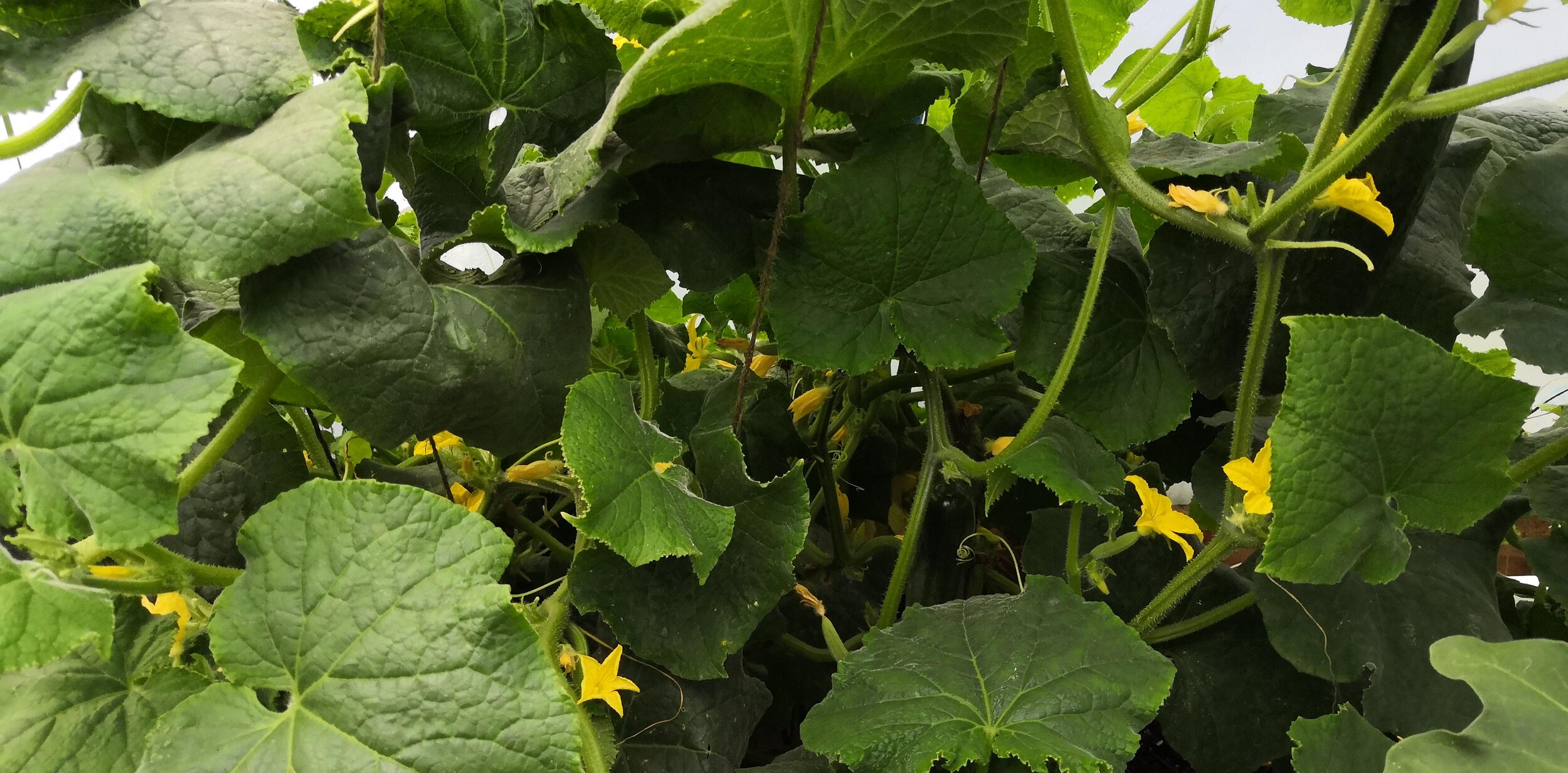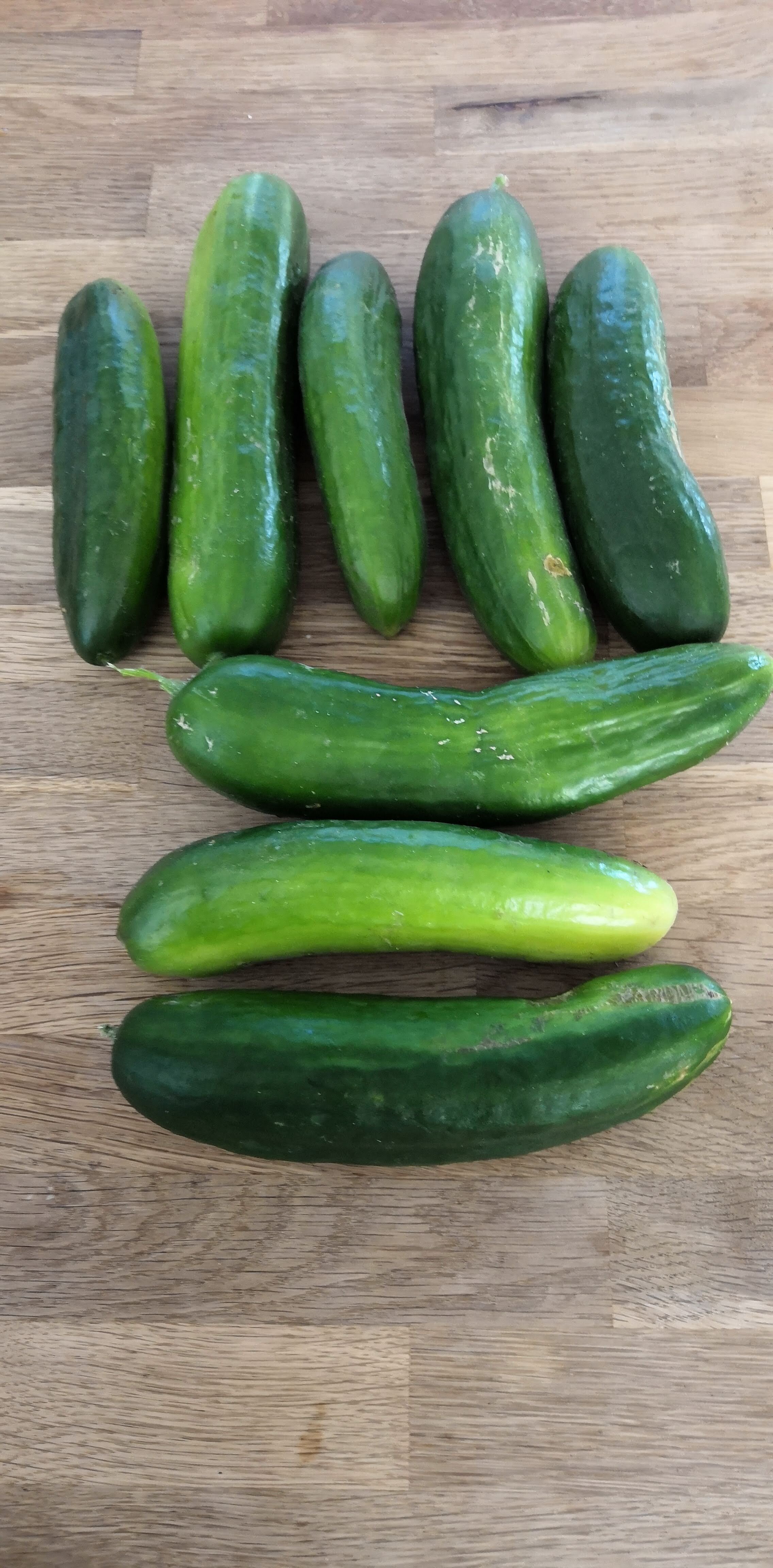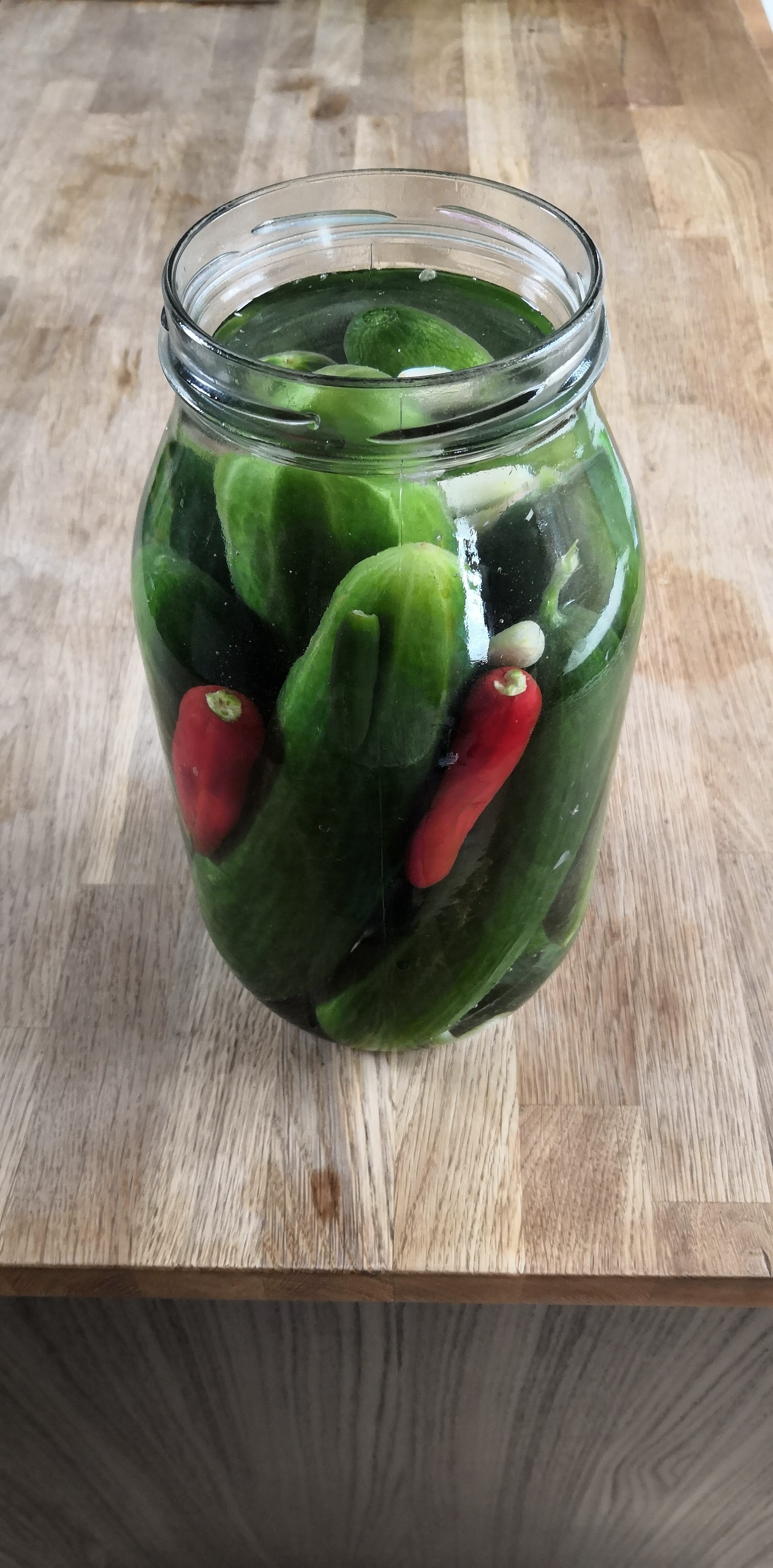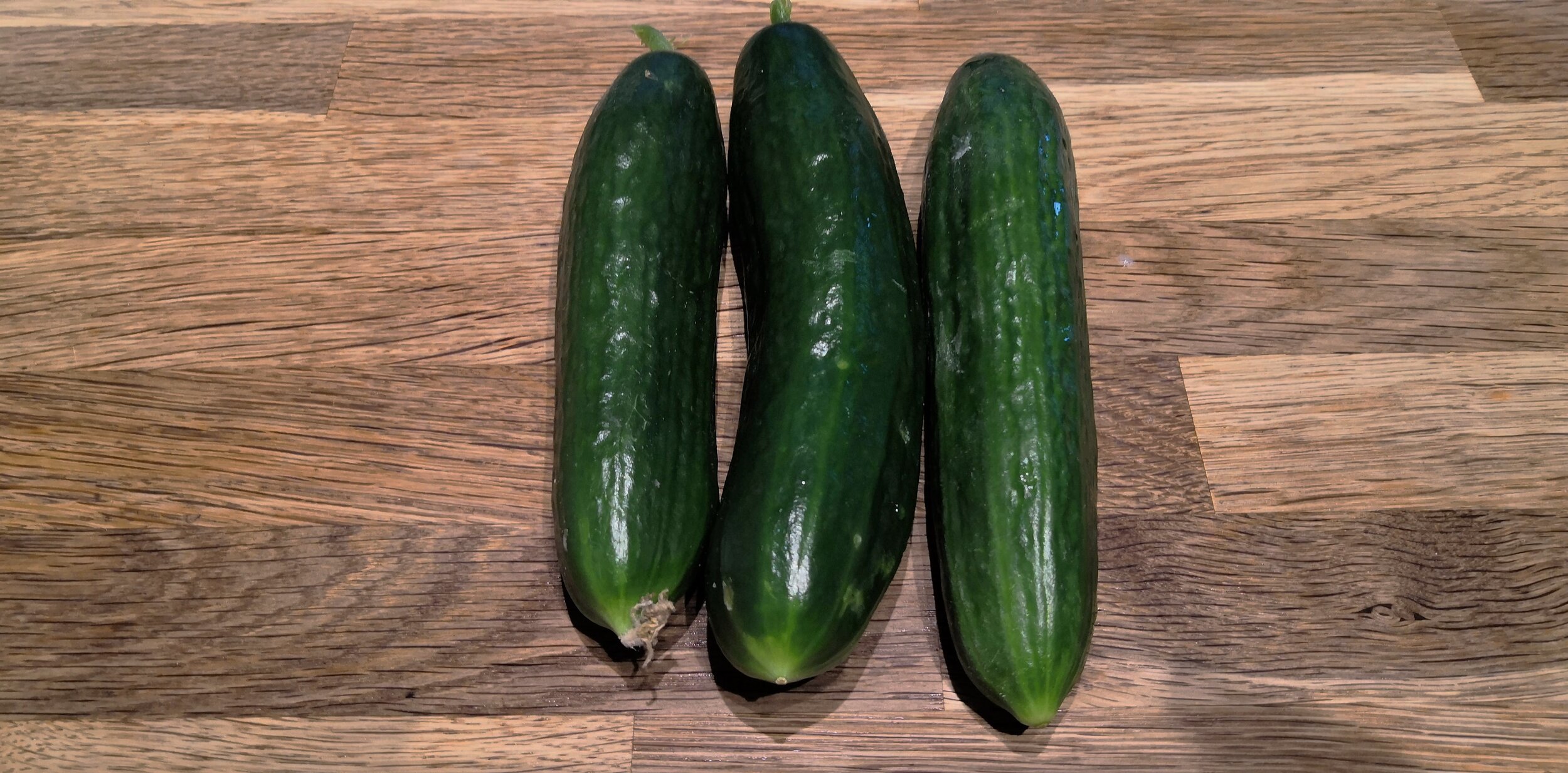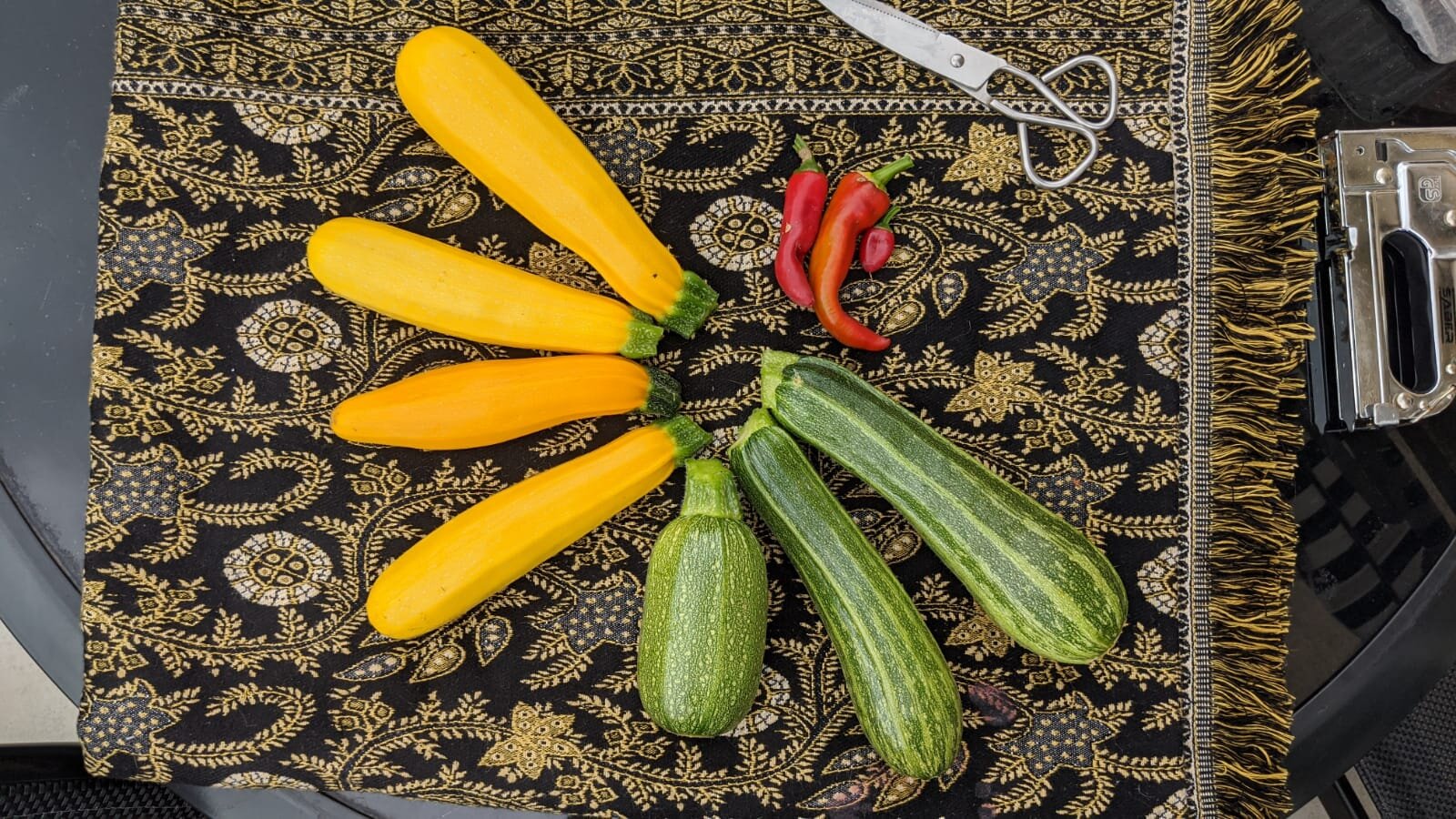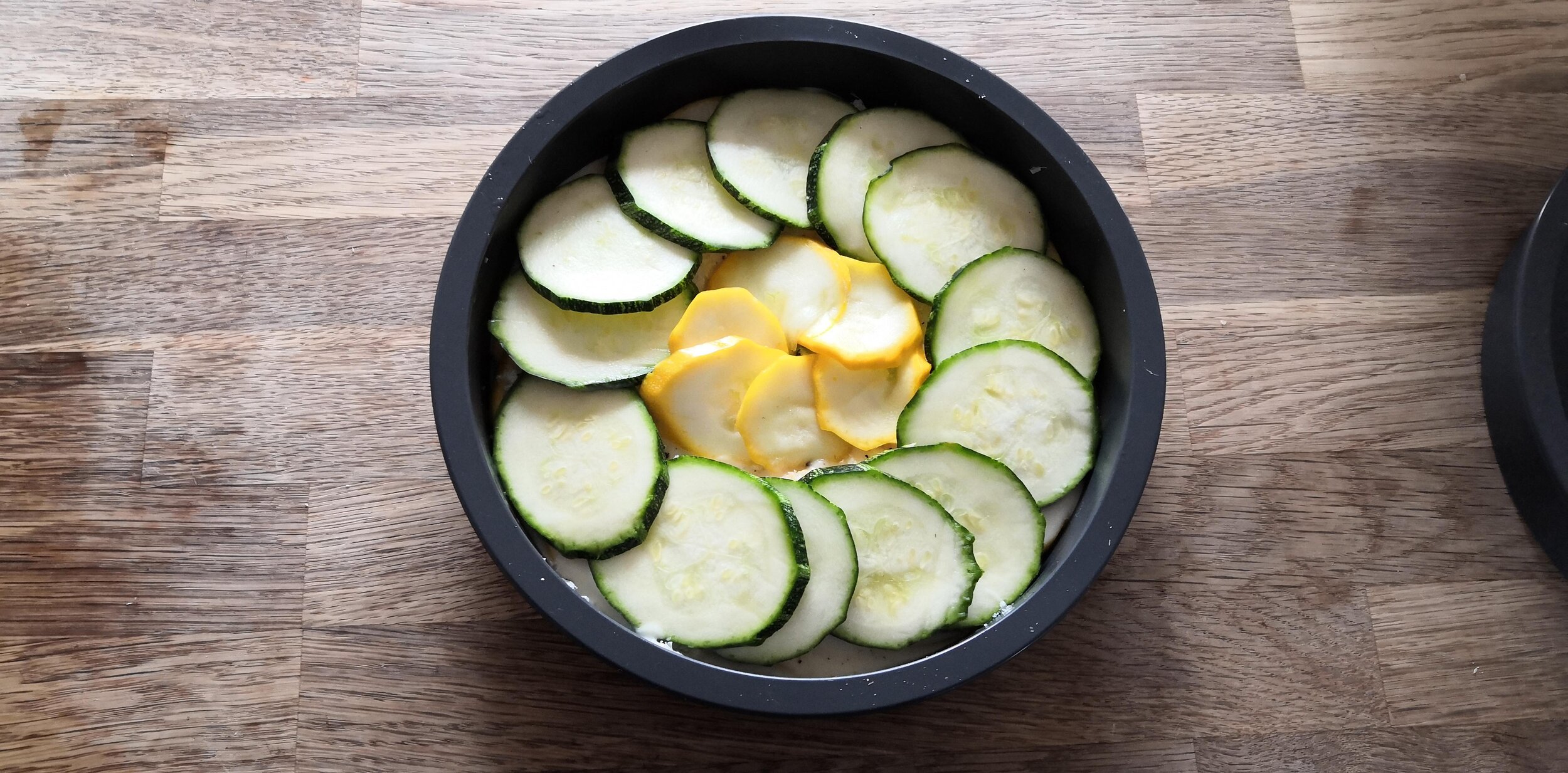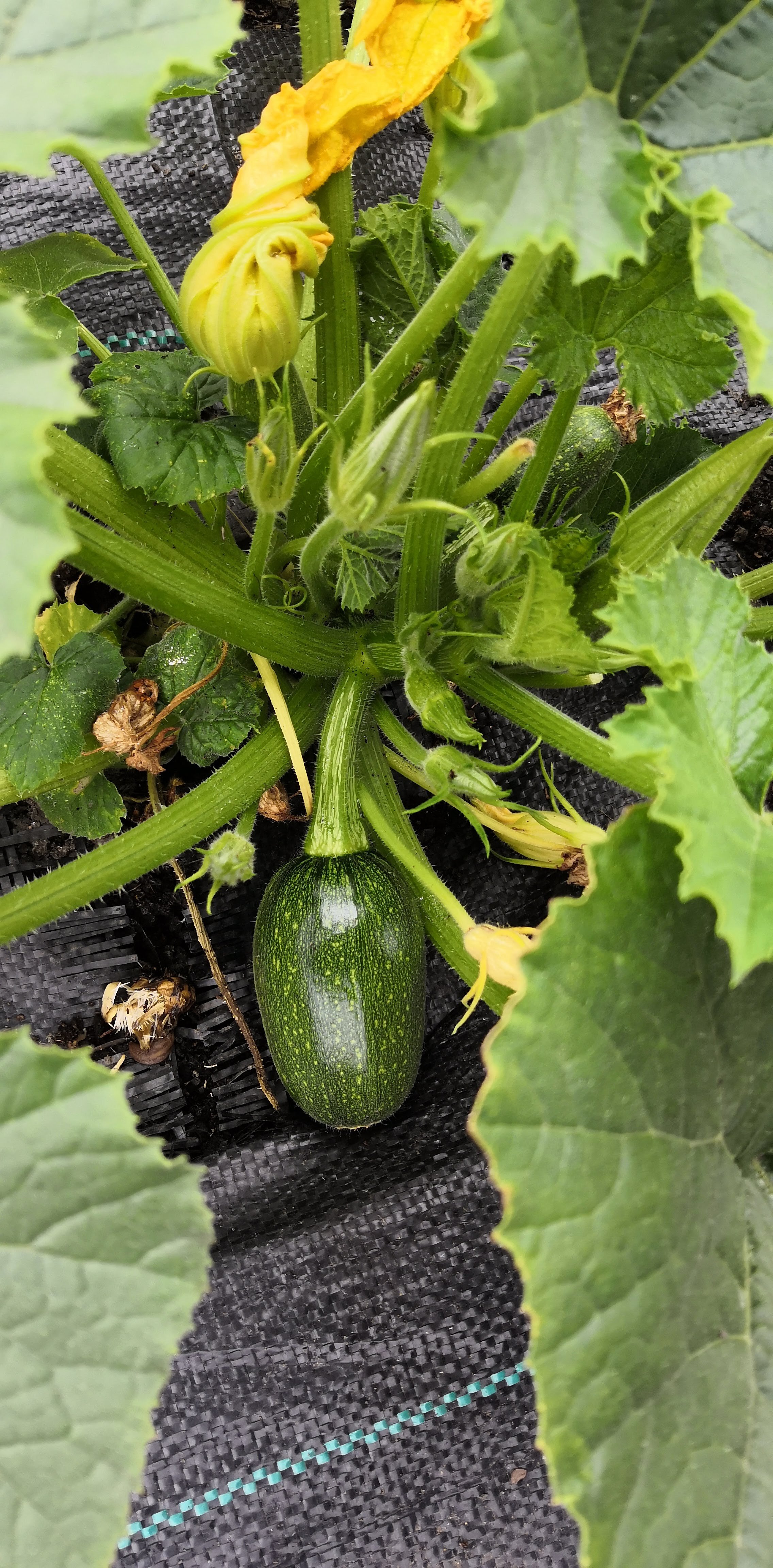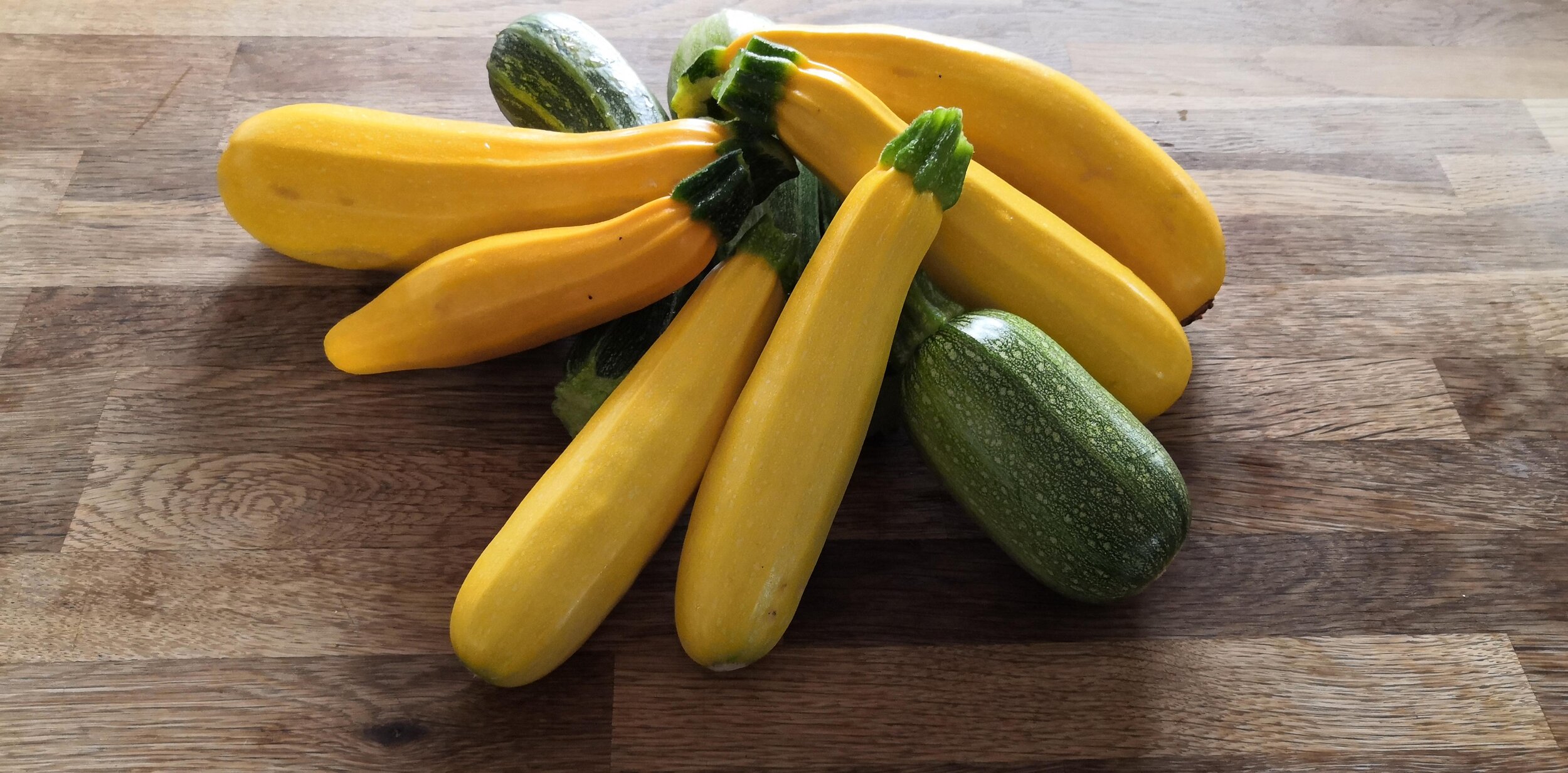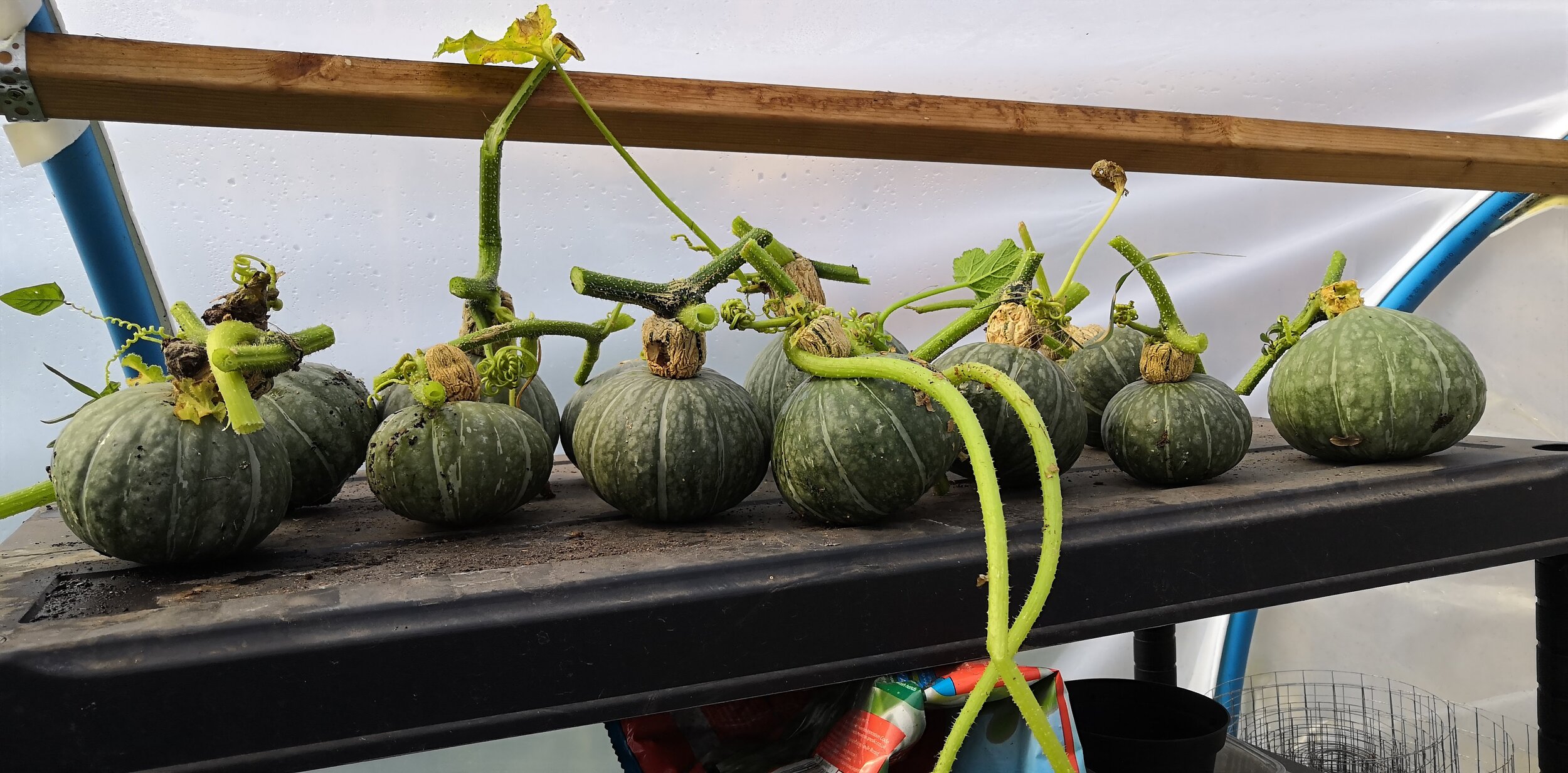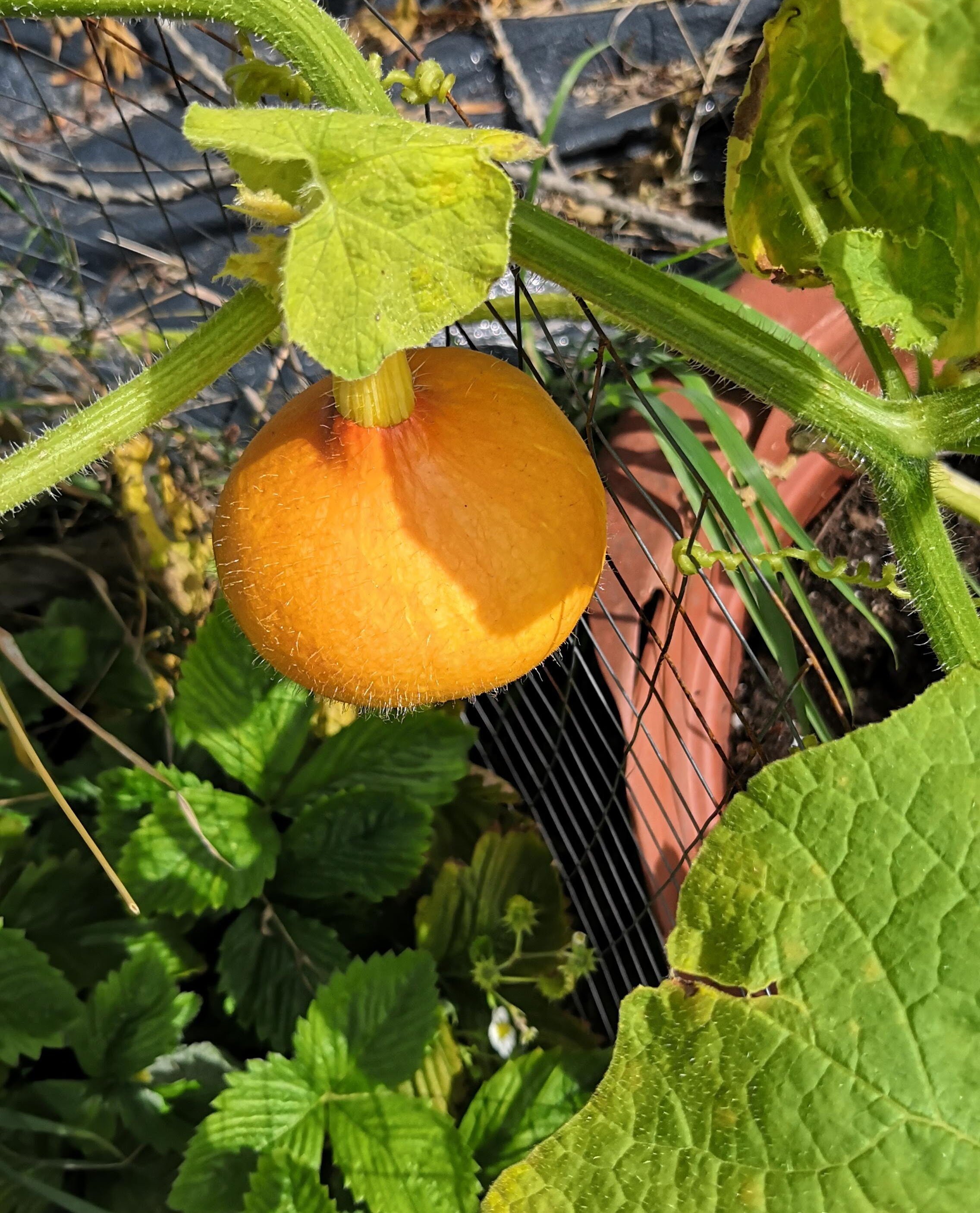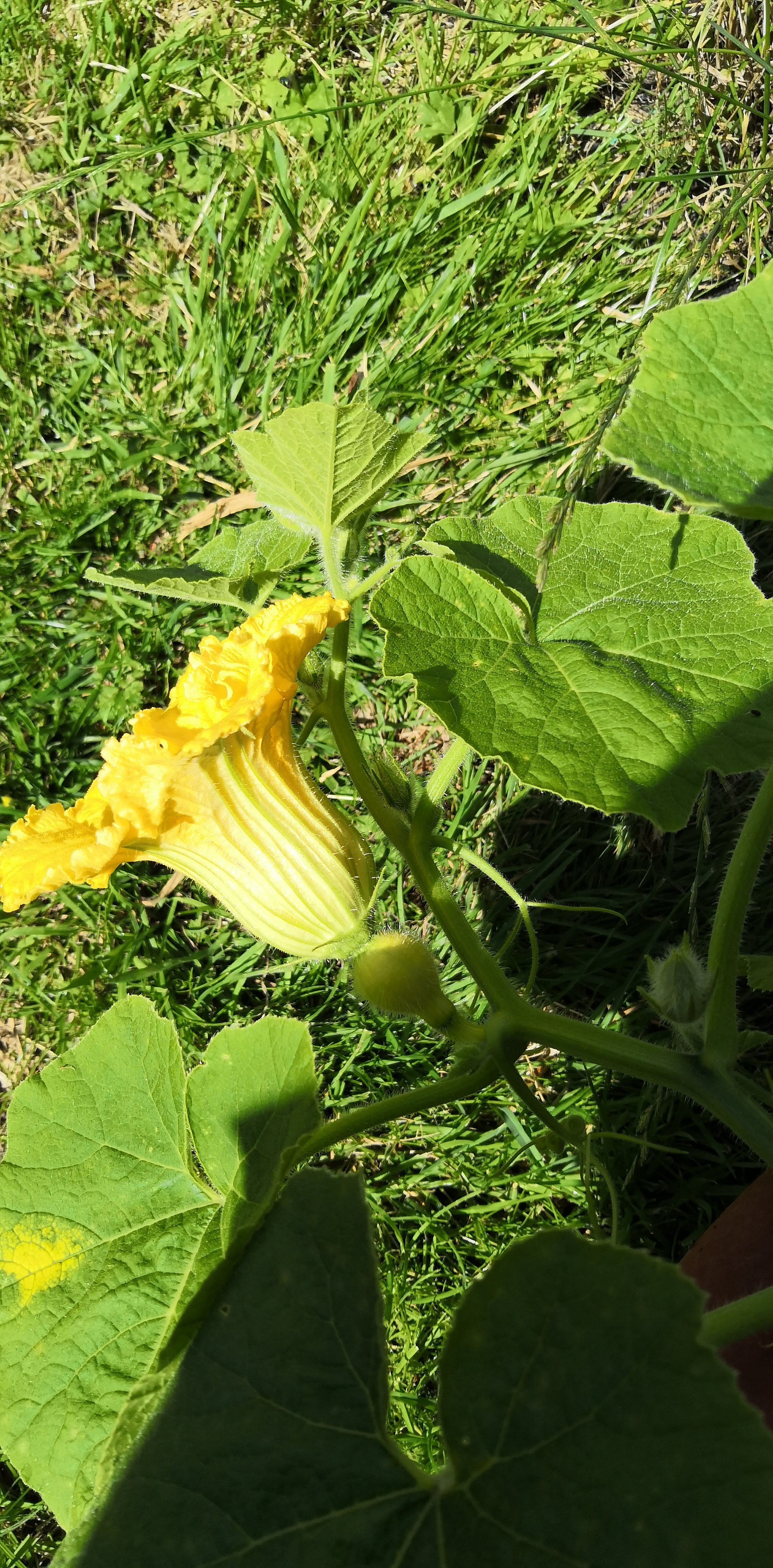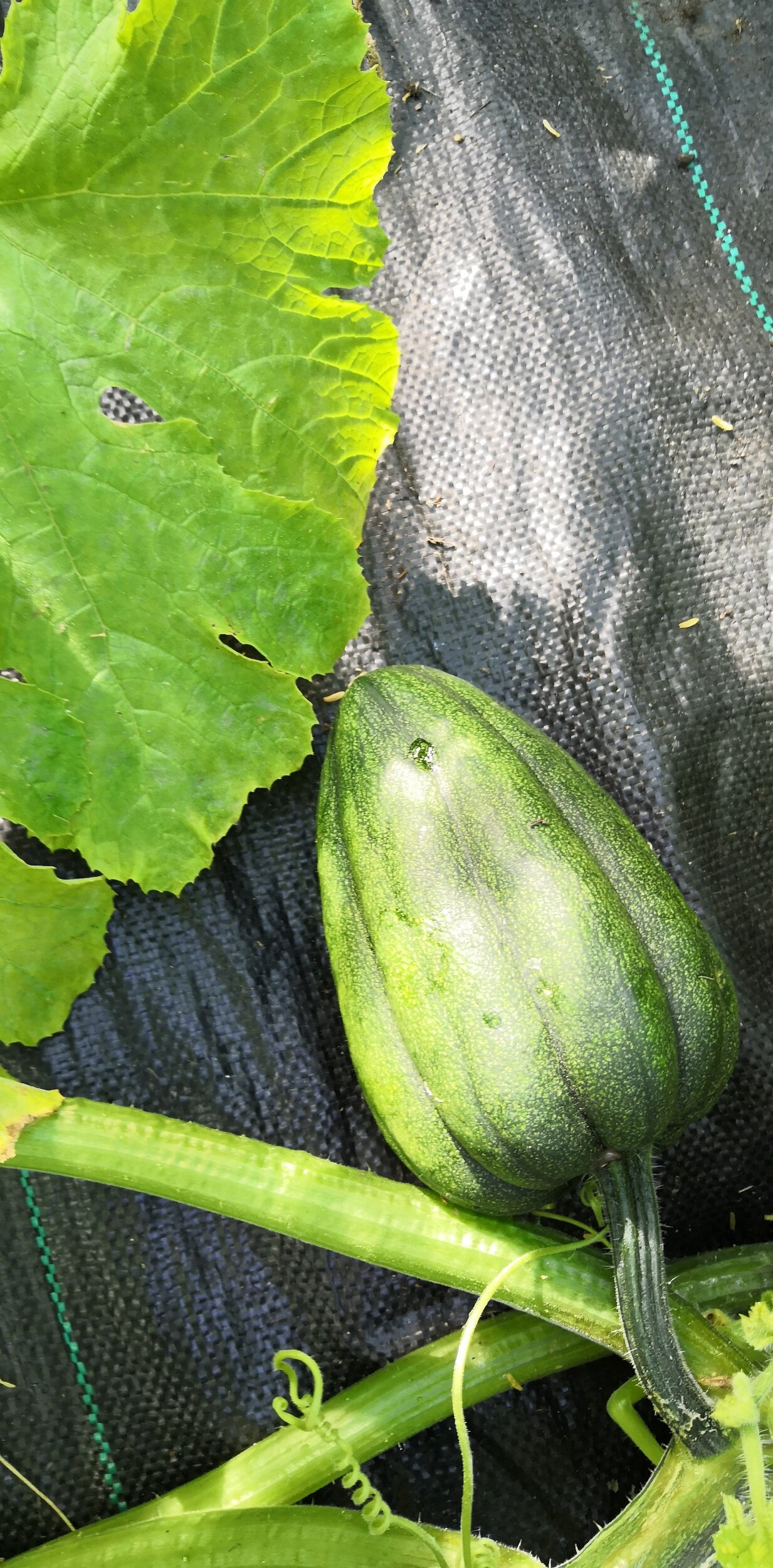🌱 Growing cucurbits 🌱
Cucurbits have to be some of my absolute favourites to grow, from 1 seed you have the potential to grow an absolute mountain of food!
Cucurbits are all very thirsty, you’ll often see people bury pots or bottles with holes drilled in, down with the roots of the cucurbits to allow for really thorough watering. They also require a lot of room around them, they’ll vine or bush out to a significant size and will choke or shade out anything around them.
One of the most common issues with cucurbits in the UK are fungal infections known as powdery mildew, usually it isn’t too significant of a problem and you can remove the leaves that are affected and reduce the strain on the plant. It won’t usually kill a plant but will stunt it and reduce the crop yield. You can recognise it by the white powdery surface coating the leaves.
Cucumber
Always an exciting thing to grow, by the middle of the summer I am hiding them in the pockets of every guest that comes to the house to try and shift them. The first few years I grew Beth Alpha, which had a lovely lemon flavour to it. But after purchasing Cucamelon seeds which definitely grew Cucumber seeds, (and incredibly prolific ones at that) I am interested to see what else the market has to offer, especially if there is something a little less scratchy out there.
The cucumbers take up an enormous amount of space in the polytunnel and I can’t have them anywhere near any other plants because the little spines on their leaves are enough to cause damage on growing fruits, even thick skins on peppers.
You can find varieties that will grow outside of a polytunnel or greenhouse and you'll find varieties as greenhouse or outdoor growing
Feed every 10-14 days with a balanced liquid fertiliser, often an all-purpose feed will do the trick.
Courgette
Summer squash or courgettes are possibly one of the easiest and most prolific vegetable plants to grow, it gives you quite the bang for your buck and you don’t really need to do much other than harvest regularly.
The varieties I am growing this year are: Atena Polka, Patty Pan, Lebanese marrow, Syrian variety which seems similar to the Lebanese marrow and a courgette that came from a big selection of seeds so is a mystery to me.
The Atena Polka is a yellow courgette and it is an F1 variety, meaning that if I saved the seeds it is a gamble what the plant I grew from the saved seeds would be like - its genetics aren’t stable yet. But the flavour was amazing! I didn’t think that much about the flavour of a courgette before, these were kind of floral, fruity and delicious. I feel like my eyes have been opened to the possibilities and I am looking for something similar with more stable genetics so that I can save the seeds.
Patty Pans are great if only for their shape, I think if you want to encourage kids to garden then growing UFOs is probably a good start. The texture is also lovely and you can hollow them out easily to stuff. The Lebanese marrow and Syrian varieties are smaller and kind of squat, they are great for stuffing and have a really lovely texture which is similar to a Patty Pan.
Courgettes are more likely to grow in a bush than a vine that you might see with winter squash (check when you are buying) which can make watering a challenge. To overcome this you can bury an empty plant pot or a plastic bottle with holes drilled in to it down in with the roots of the plant, then when you go to water you fill up the bottle/pot and it will slowly drain right to the roots. I also plant my squash plants through weed suppressant fabric, this will keep moisture in and weeds at bay. When planting in pots I will add a thick layer of mulch instead for the same reasons. When the courgette plant gets going it will do an excellent job of weed suppressing on its own but to start with it may require some help, especially as cucurbits all require a large footprint.
As well as being very thirsty the squash will need a regular feed, a liquid high potash feed (such as a tomato feed) every 2 weeks should do it but follow the instructions on the bottle.
Winter Squash
Winter squash and pumpkins are slower growing, and are a much bigger space investment. They are often vining so you’ll need to tell them where to go and regularly make sure they aren’t going off in their own way. When the fruits appear make sure they have some space to grow, they aren’t trying to push themselves through a fence and they won’t get a soggy bum. You’ll know they are ready to harvest when the vine is dying back and they will need to cure if they are suitable for storage. This involves sitting them out in the sunshine, keeping them dry for about 2 weeks. Ideally they will be somewhere with good air circulation but you can also turn them regularly to ensure they cure evenly.
As well as being very thirsty the squash will need a regular feed, a liquid high potash feed (such as a tomato feed) every 2 weeks should do it but follow the instructions on the bottle - just as the summer squash.
It is hard to beat a Butternut squash but I like to grow varieties that are exceptional and you can’t just nip to Tesco and pick up, I waited with great anticipation last year for the Japanese pumpkin AKA Kabocha Squash (low in FODMAPs) but it was very bland and I did not enjoy the texture. Much to my surprise it has self seeded and popped up in the garden again this year!
New varieties I am intentionally growing this year are: Spaghetti squash, Acorn squash and Uchiki Kuri (we’ve lovingly named itchy curry due to a mixture of terrible pronunciation and poor hearing). The Spaghetti squash was planted in an area of the garden not usually used which is apparently cursed and everything planted there died, I'd very much like to try again next year though. The Acorn squash was a little over enthusiastic with its foliage and when checking for flowers I was overwhelmed with a very strong smell of mould. I pruned back some of the leaves and it was able to flower, it has continued to put on too many leaves and not enough male flowers throughout the year. I'd blame the fertilizer but it has had the same as all the other squash, perhaps this variety is more sensitive though. The Uchiki Kuri was also planted in the cursed section of the garden but was saved and it has managed to limp on bravely, it seems a favourite with gardeners so I'm hopeful.
The Future…
There are still many more cucurbits to try: Watermelon, Melon, Luffa (Loofa), Gourds and Bitter Melon…

